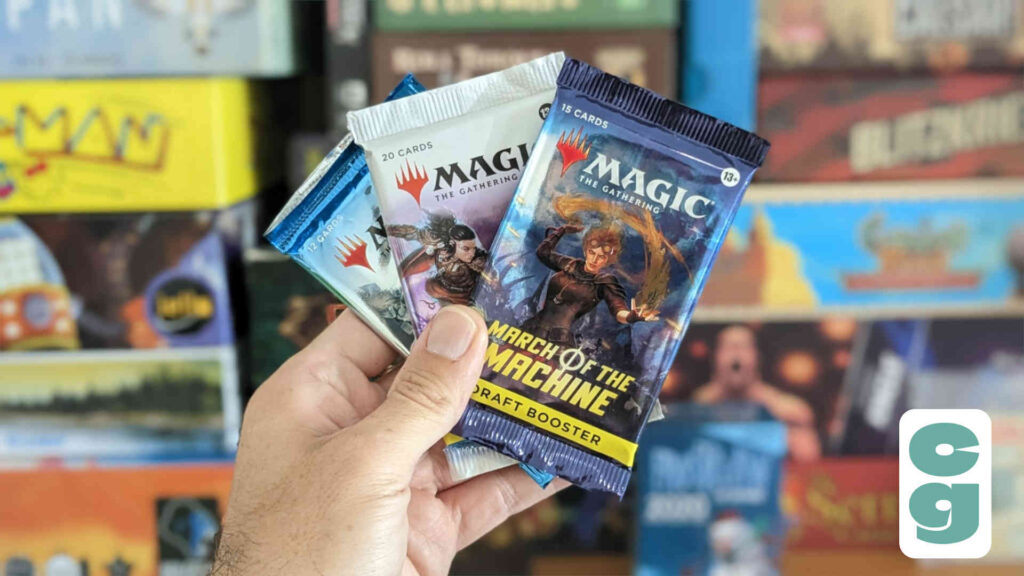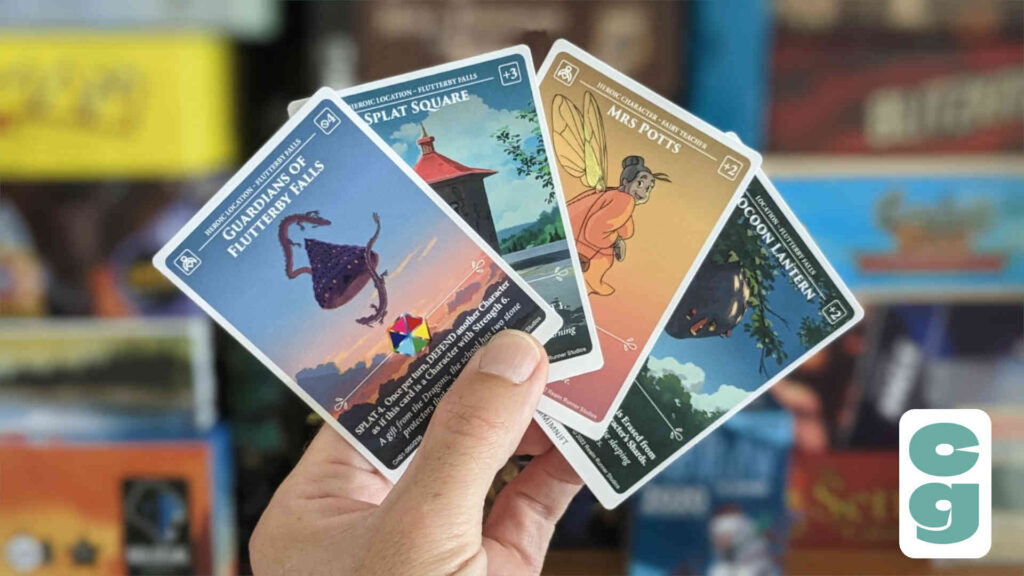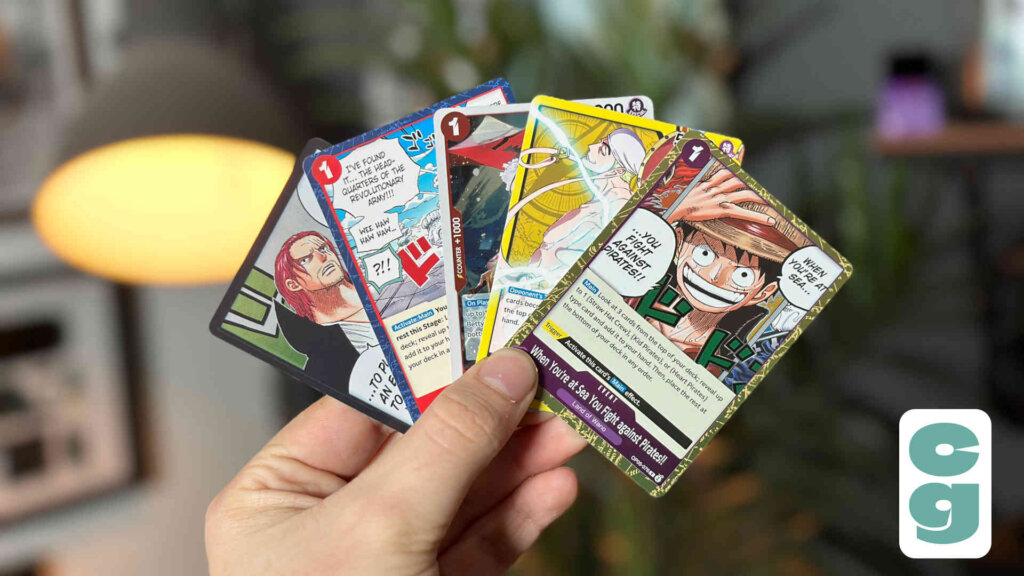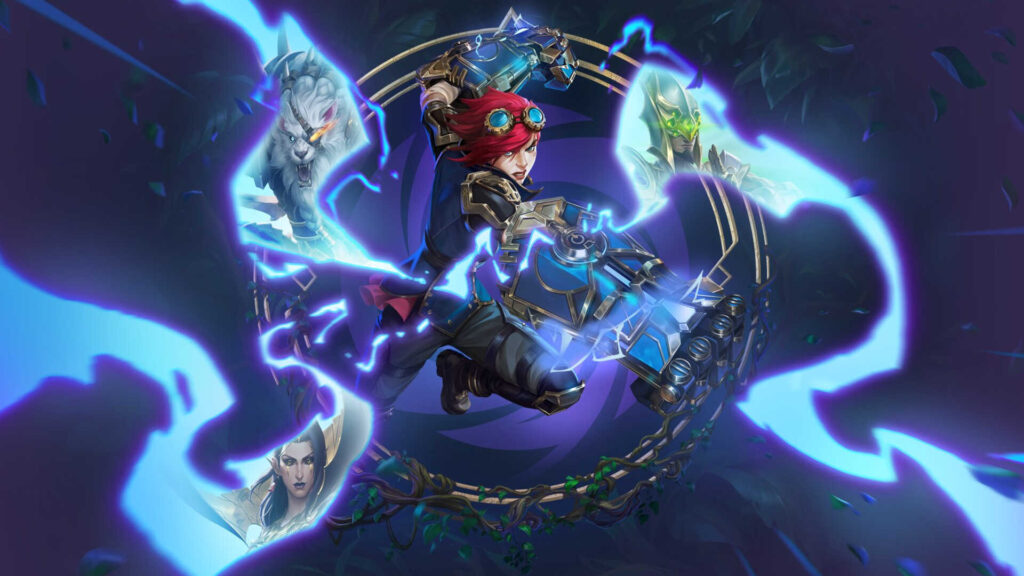Are you looking to take your first steps beyond the simple card games of your childhood? Or maybe you’re a parent of a teenager who’s keen to expand their gaming horizons? Either way, let’s take a look at Card Gamer’s recommendations for the best card games for teenagers!
For numerous, well documented reasons, the teenage years can be very awkward.
Teenagers are in a weird place between childhood and adulthood – looking to learn, grow and experience new things, which were just out of reach when they were younger.
So what games can Card Gamer recommend for teens that aren’t too childish, aren’t too adult in tone and won’t patronise them?
As everyone on the Card Gamer team have been playing tabletop games since before we were teenagers, we think we’ve got a pretty good idea of the right games to recommend.
So come with us, as we check out the best card games for teenagers!
Table of Contents
Toggle1. Magic: The Gathering

Now in its 30th year, even Magic: The Gathering has survived its own awkward teenage years – and is flourishing now, arguably more popular and well known than ever before.
So what makes it the perfect game for teenagers?
Teens may well have been playing Pokemon for years by now if they already have an interest in card games and, though there’s absolutely nothing wrong with playing Pokemon well into adulthood (that’s what we tell ourselves here at Card Gamer!), there’s something to be said for the increase in depth and more mature tone that Magic: The Gathering often has.
From a mechanical point of view, with Land cards as energy, Artifacts and Instants functioning similarly to Supporter or Trainer cards and creatures in place of Pokemon, Magic: The Gathering plays reasonably similarly to Pokemon too.
However, combat is a step up in complexity and is a much more involving and strategic process – and is part of what makes Magic: The Gathering an incredibly satisfying game for teenagers.
Deck building and the huge amount of strategies involved in putting together your 60 card deck is an involving, compelling and addictive part of the game too – not that Pokemon doesn’t have that aspect, of course.
That said, referring once more to Magic: The Gathering’s comparative strategic depth, though the sheer number of cards and options on offer can be bewildering – and once the various combos and strategies click into place – there’s arguably few gaming experiences that are more satisfying.
Additionally, Magic: The Gathering can be played in numerous ways, including the brilliant, 100 card Commander format – which is also very well supported at present and more popular than ever.
Magic: The Gathering’s longevity and enduring popularity makes it the perfect choice of card game for teenagers to immerse themselves in, but of course there’s more to discover on our list of the best card games for teenagers!
2. Star Wars Unlimited

With Star Wars having been around for close to five decades, it’s a franchise that many generations of fans are able to enjoy, thanks to constant streams of new content that expands on the sprawling space opera saga.
With trading card games (TCGs) becoming ever more mainstream, thanks to huge events such as the Lord of the Rings expansion in Magic, during that game’s 30th anniversary year (which led to Post Malone buying the coveted The One Ring card for $2,000,000!), as well as the launch of games such as Disney Lorcana, it’s no surprise to see Star Wars returning to tabletops as a TCG.
‘Returning?’, I hear you ask; that’s right; Star Wars has a long history with different TCGs, at varying levels of success, having been released over the years. It’s something we’ve covered in detail in our History of Star Wars CCGs feature (that’s collectable card games; essentially the same thing as TCGs!).
So what makes Star Wars Unlimited, the latest TCG to feature the saga, such a great game for teens to play?
Well, for one thing it’s a game with simplified, yet deep mechanics. It’s easy to learn, moves very quickly (thanks to a ‘one action per turn’ rule) and the first set, Spark of Rebellion, focuses on what is undoubtedly the most popular era of Star Wars: the original trilogy.

It also has a simplified product range; unlike Magic: The Gathering’s different types of booster packs, formats and starter sets, you’ll find one type of Two Player Starter, plus one booster pack type.
There’s no gift sets or bundles or anything else that could lead to confusion about where to start; teens can pick up a two player starter, easily learn to play with a friend or family member using the enclosed rules and very helpfully laid out play mats (which have their own rules and turn summaries to make things even more straightforward), and then move onto expanding those decks (or building their own from scratch) with booster packs after that.

Booster packs themselves are built with draft and sealed play in mind, meaning that players can easily join in with groups local to them if they want to play socially and slightly more competitively.
Star Wars Unlimited is a game designed from the ground up to be accessible and appealing to fans of TCGs, Star Wars and both; there’s always been a lot of crossover potential with fans of card games and the Star Wars saga.
Star Wars Unlimited capitalises on that, with an elegant game design that, while straightforward, still offers the depth and complexity that long term players need in a TCG.
You can check out our full review of Star Wars Unlimited here.
3. Achroma

Another relatively new kid on the recommended card game block is Achroma; a game that’s quickly and quietly made quite a name for itself, albeit on a smaller scale.
UK-based Realm Runner Studios released the first Achroma set in 2021.
This Evolving Card Game, as it’s known, has gained itself a decent sized following since then – and is still impressively growing too.
Like Magic: The Gathering and Flesh and Blood, Achroma cards can be collected and traded, though it doesn’t quite fit the mould of a ‘traditional’ Collectable Card Game (CCG) or Trading Card Game (TCG).
Instead of boosters, cards are purchased in beautifully minimalist box sets, containing either ready to play decks or cards from a specific ‘Palette’; the term for the game’s varied factions.
There is randomness in terms of which decks you’ll get in your box set, however – though if you do opt for a specific Palette set, you’ll get a pre-determined set of cards; this will include a pre-constructed Palette (or pre-built deck) and a smaller number of cards that you can use for deck building purposes, but these are all non-randomised.
The beautiful, Studio Ghibli-esque art of Achroma weaves an intriguing, ongoing (and, importantly, evolving) story set in a world of fantasy, magic and the dark energy of Achrom.
The very concept of colour and ink is woven throughout the game’s mechanics and naming conventions, as well as on the cards of the highest rarity – which feature raised, shiny ink outlines on otherwise matte cards.
Learning Achroma is easy thanks to a very well supported companion app for mobile devices – which also provides a way to track the game’s resource, Shards, for each player.
There are two ways to win a game of Achroma: either accrue 30 Shards (easier said than done, as each player starts with ten, which are also used to pay to bring cards into play) or reduce your opponent’s Shard total to zero.
It’s an original concept that’s beautifully produced, with the rich lore and detailed universe being well supported by supplementary material including soundtracks and even a tabletop RPG, which allows players to delve even further into the game’s impressively deep storyline!
You can take a look at our full review of Achroma: The Evolving Card Game here.
4. Disney Lorcana

I must admit that I heavily considered not including Disney Lorcana on a list of the best games for teenagers, mostly due to the fact that, when I was a teenager myself, I probably would have scoffed at the cartoony imagery and dismissed it as a game for kids.
Yet there’s no denying that Lorcana covers such a wide range of Disney stories, characters and settings (drawn from the rich, century-spanning history of the animation studio) that it has something for everyone, regardless of their age.

It also helps that, despite its focus on cartoon characters, the artwork quite often feels a lot darker (and therefore less, for want of a better word, childish) than you may expect.
That’s thanks to the game’s lore, which sees players casting ‘Glimmers’ (the in-game term for Disney characters) using magical Ink, which can lead to certain Glimmers being transformed from their usual, more familiar, selves.
In Lorcana, players compete to collect 20 points of Lore, by sending their Glimmers on Quests.
Questing Glimmers are exerted, which means that they are left vulnerable to attacks (or, in the softer terminology of the game, ‘Challenges’) from the Glimmers that opponents have in play.
Like Star Wars Unlimited, Disney Lorcana is an easy game to learn and play; the complexities, as with almost all TCGs, arise with the cards themselves.

Elements such as Locations do add slightly more complexity to the game, but these only arrived with the third set, Into the Inklands; an easier way into the game would be via The First Chapter or Rise of the Floodborn Starter Decks.
Check out our ranking of Disney Lorcana Starter Decks if you want to see which set is best for you!
5. Star Realms

Though we’ve recommended a Star Realms game as one that’s great for couples – Star Realms Frontiers, mostly because it offers a co-op mode – we’re going back to the original game as a recommendation for teenage players here.
In Star Realms, players try and reduce their opponent’s Authority – which is, essentially, their intergalactic political power – from 50 points to zero.
Both players start on equal footing with the same ten card decks, but use these to gradually purchase more cards – from a central row of face up cards – to add into their deck, giving them access to more resources and attack power as they progress.
There are four different factions in Star Realms, each of which has a different speciality – and powerful combos of attack or resource bonuses can come into the equation when you play cards of the same faction together.
Star Realms is an incredibly easy game to pick up – both to learn and teach, thanks to clean iconography and the overall visual design of the cards, as well as its straightforward mechanics – and it’s well supported with a digital version that’s just as compelling and addictive as the physical game.
What’s more, Star Realms is a small game that’s also very affordable – so it’s a great game to take anywhere with you.
There’s also numerous expansions for Star Realms that add to the basic experience if that’s something you want to do – and this can also allow you to play with more than just two players too!
6. UniVersus

One of the longest running games on this list, UniVersus was first launched in 2005, though has been rebranded and updated in the years since then.
However, one of the best things about UniVersus is that, even though it initially began life as the Universal Fighting System (or UFS), becoming UniVersus much more recently, all cards that have ever been released are compatible with each other!
So you can use more recent My Hero Academia, Cowboy Bebop or Trigun Stampede cards against Street Fighter, Mortal Kombat or Mega Man cards that were released a decade or more ago (check out our guide to the various UniVersus cards here).
With a strong background in adapting both fighting games and anime, UniVersus is a great game for teenagers, who are likely to be interested in both!

The UniVersus gameplay actually feels like an arcade fighting game too, with characters facing off against each other, trying to string together combos of attacks in order to reduce their opponent to zero health.
It’s a little difficult to find decks and boosters for UniVersus, which is a bit of a shame; though it has impressive longevity, it doesn’t seem to have ever pushed beyond its relatively small and dedicated fanbase.
That’ll hopefully change over the coming years, as UniVersus is going to the worlds of Godzilla, Star Trek, Tekken and Attack on Titan in new sets, so we may well see the game gaining lots of curious new fans along the way!
7. One Piece Card Game

Another game that, like UniVersus, isn’t always easy to get hold of in stores, the One Piece Card Game is the latest title to adapt the hugely popular, pirate adventure anime/manga saga.
Publishers Bandai have created a simple and addictive game that has a lot to offer for both players and collectors, but it’s also perfect for One Piece fans.
The cards feature absolutely gorgeous art and, with so many sets now available, a wide range of story arcs, characters and settings have been adapted to the card game, which sees players taking a Leader into battle against another, with other support Characters in their deck being used to try and reduce their opponent’s Life deck to zero cards.

It’s a fast paced, straightforward and pretty aggressive (mechanically, at least!) card game, but the cards themselves have also proven popular among collectors due to the stunning amount of rarities, alternate art and spectacular foil treatments that can be found in booster packs.
If you can find One Piece cards and opponents to play against, or if you’re just a fan looking to collect the cards, there’s an awful lot to enjoy in this excellent adaptation of the saga!
8. Welcome To The Dungeon

Moving away from collectable or trading card games for a moment, Welcome to the Dungeon is a small, self-contained game that can be enjoyed by players of all ages.
It’s an especially good game for teenagers, as the bluffing and push-your-luck mechanics make its concepts a little difficult to comprehend for the youngest of players.
Welcome to the Dungeon sees players bidding and bluffing as they stock a dungeon with deadly monsters for a Hero to take on.
Players draw cards to put into a dungeon deck, which (eventually!) one player will take on, using the shared Hero and their equipment to try and survive.

In order to survive the dungeon, players can use equipment cards to delve further and tackle different types of monster, but the further they go, the more risk there is of not coming back alive!
Cleverly, the dungeon deck itself consists of just thirteen cards, so players can make educated guesses as to what may be in the Dungeon during any given round, based on the cards they have placed in there themselves.
Though it can take a little while to get your head around the game’s unique mechanics, it soon becomes incredibly addictive and you’ll often find yourself wanting to play just one more game; as game rounds last roughly a few minutes each, it’s really easy to go back for more.
With different characters, each with their own abilities and equipment, to choose from, despite the minimalist nature of Welcome to the Dungeon, there’s lots of variables to add to the game’s longevity; if you’re still looking for more of the same (but different!), there’s even a sequel (Welcome Back to the Dungeon) too!
9. Flesh And Blood TCG

Definitely a new kid on the block, the Flesh and Blood TCG has only been around since 2019, but has managed to make a huge impression on the card game community in that time.
So what makes it such a great game for teenagers?
Like Magic: The Gathering, Flesh and Blood is a step up in terms of maturity and complexity from card games that are primarily aimed at younger players.
Unlike Magic: The Gathering, however, Flesh and Blood zooms in on a single fight between two Heroes, who clash with the aim of reducing their opponent’s health to zero.
Equipped with weapons and other gear, players chain attack combos together, as the opposing player’s Hero attempts to defend in a timely and strategic manner.
It’s a genuinely clever game with superb, original mechanics – The Chain being one, but ‘pitching’ cards to use as resources is also a great touch – and a great, evolving cast of characters to choose from.
Players can immerse themselves in the fantastic lore behind Flesh and Blood too, with its steampunk fantasy setting being rich, diverse and compelling.
Some of the imagery – and it must be said, the cards are all beautifully, lavishly designed and illustrated – can be a little dark, it must be said.
However, if you have an older teen who’s not afraid of a little gore and a sometimes macabre tone, Flesh and Blood is a great choice of card game for them.
Even better, Flesh and Blood is incredibly well supported at retail by publisher Legend Story Studios – with organised play and free decks of cards to learn the game available anywhere you can buy the decks and boosters!
10. Here To Slay

Up until now, we’ve recommended games for teenagers that they can really immerse themselves in through deck building, as well as collecting and trading cards – and taking deep dives into the lore behind each game if they also want to.
Here To Slay is different; though it does have numerous expansions, it doesn’t feature any CCG or TCG style aspects – so it’s a pretty self contained and much more straightforward experience than other games on the list of the best card games for teenagers.
Essentially a Dungeons and Dragons style quest game – complete with characters of various iconic classes, such as Fighters, Wizards and Bards – you’ll take a party of anthropomorphic animal heroes on an adventure to slay monsters and sometimes sabotage your opponents too.
Though initially cute in appearance, the game can see players working to thwart each other, giving it a bit more edge than it might first seem to have.
Much more luck based than other games on this list, it’s a less demanding and less involving game too, but as a palette cleanser or something to play with more casual gaming friends, it’s a good choice.
A step up from the outright luck-of-the-draw games that teens may have been used to playing when they were younger, but without the layers of complexity – or dark themes – that feature in a few of the other games we’ve recommended here.
Here to Slay is perhaps a great way to introduce younger teens to card games, before moving them on to the meatier experiences above this entry in the list!





